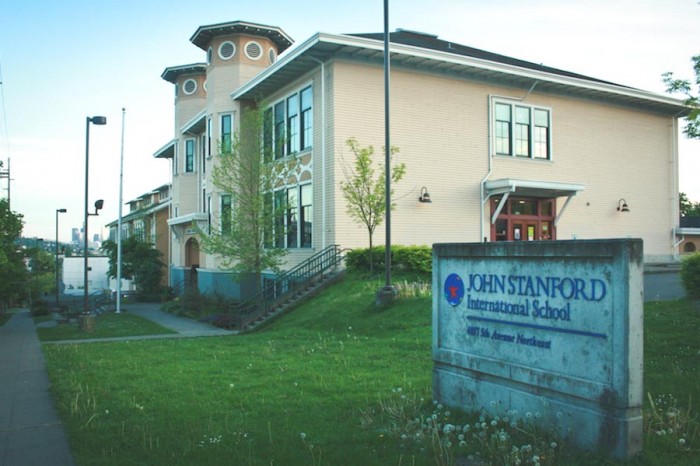Children are better at language acquisition than was once believed, according to a renowned Canadian psychology professor who gave a talk on Mercer Island last week.
Fred Genesee, Professor Emeritus at McGill University in Montreal, has studied bilingualism among children extensively. With dozens of studies to his name, Genesee and his colleagues work to prove the benefits of bilingualism in young learners.
“The younger you are [when language acquisition begins], the more likely you are to obtain native status,” Genesee said.
Genesee shared some findings of his research with Seattle families Wednesday at Stroum Jewish Community Center.
Disproving myths of bilingualism among young children, Genesee addressed common misconceptions about dual language acquisition. Using his own research as evidence, he challenged the commonly-held belief that children’s brains are naturally monolinguistic, and argued that learning two languages simultaneously isn’t necessarily more challenging.
“Children are very competent,” Genesee said. “Research shows that bilingual children have certain cognitive advantages [over their monolinguistic peers]. We should not underestimate children’s neurocognitive ability.”
Bilingualism is a growing trend among families with younger children. By fall 2014, Seattle Public Schools will have ten international schools where kids can start dual language learning in kindergarten and continue all the way through high school graduation.
In addition, dozens of local preschool immersion programs offer Seattle-area families the ability to start their children early with languages from Chinese to German.
Karen Kodama helped found the John Stanford International School, the first international school in the Seattle School District. She says that early childhood language learning is a key aspect to learning what she calls “21st century skills.”
“Collaboration, communication skills, more creativity — business leaders are saying these are things kids need to know,” Kodama said.

International schools focus on more than just on language acquisition. Kodama said the schools put a global focus on everything that is taught. Students are encouraged to open their minds to other perspectives and think outside of their own culture and many of the schools have sister schools in countries like Japan and Mexico.
Both Kodama and Genesee agree that bilingualism has a substantial positive impact on children. In an ever expanding world, top companies are looking for employees with a global connection, which students in a language immersion school can provide.
“[Bilingual kids have] increased problem solving skills, they persevere more, they don’t give up.” Kodama said. “They are part of an international education that opens their minds to other perspectives.”



We organise international exchanges for children from 9 y/o, and the results are incredibles. Many of our children decide to repeat the experience after the first exchange, so finally most of them are fluent in 3 or 4 languages. Living for 3 or 6 months with a selected foreign family is the best experience we can offer to our children ♥